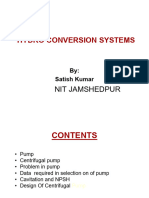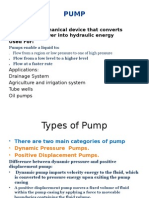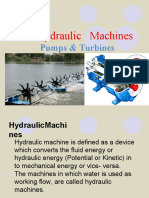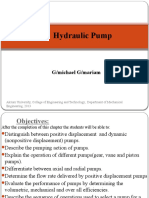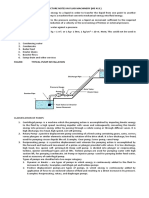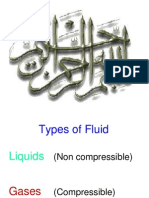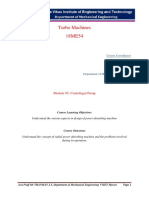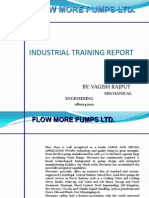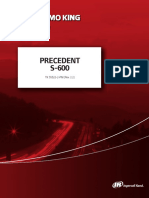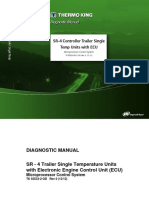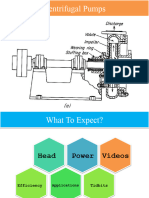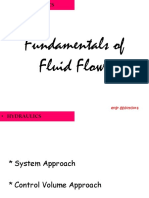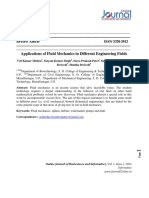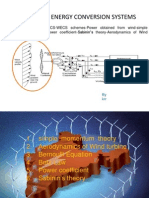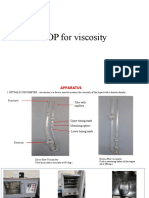0% found this document useful (0 votes)
175 views35 pagesHydraulic Pump Systems Overview
The document discusses various types of hydraulic machines including pumps, their history and classification. It describes positive displacement pumps like reciprocating and rotary pumps that work by trapping a fixed volume of fluid and displacing it, which can generate very high pressures if the discharge is closed. The document also covers centrifugal pumps and their operating characteristics compared to positive displacement pumps.
Uploaded by
Mohamed MoatazCopyright
© © All Rights Reserved
We take content rights seriously. If you suspect this is your content, claim it here.
Available Formats
Download as PDF, TXT or read online on Scribd
0% found this document useful (0 votes)
175 views35 pagesHydraulic Pump Systems Overview
The document discusses various types of hydraulic machines including pumps, their history and classification. It describes positive displacement pumps like reciprocating and rotary pumps that work by trapping a fixed volume of fluid and displacing it, which can generate very high pressures if the discharge is closed. The document also covers centrifugal pumps and their operating characteristics compared to positive displacement pumps.
Uploaded by
Mohamed MoatazCopyright
© © All Rights Reserved
We take content rights seriously. If you suspect this is your content, claim it here.
Available Formats
Download as PDF, TXT or read online on Scribd
/ 35

